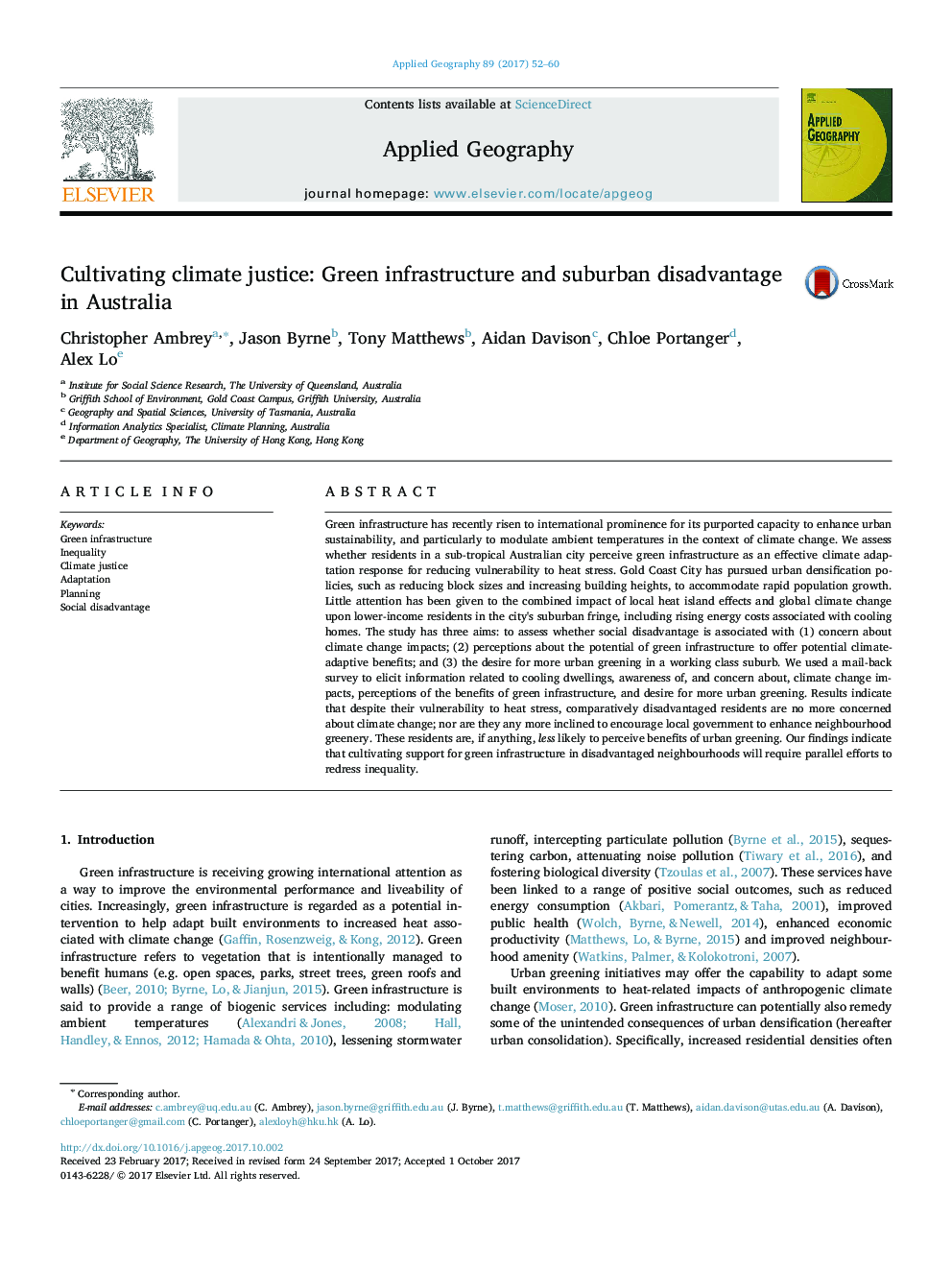| Article ID | Journal | Published Year | Pages | File Type |
|---|---|---|---|---|
| 4758995 | Applied Geography | 2017 | 9 Pages |
Abstract
Green infrastructure has recently risen to international prominence for its purported capacity to enhance urban sustainability, and particularly to modulate ambient temperatures in the context of climate change. We assess whether residents in a sub-tropical Australian city perceive green infrastructure as an effective climate adaptation response for reducing vulnerability to heat stress. Gold Coast City has pursued urban densification policies, such as reducing block sizes and increasing building heights, to accommodate rapid population growth. Little attention has been given to the combined impact of local heat island effects and global climate change upon lower-income residents in the city's suburban fringe, including rising energy costs associated with cooling homes. The study has three aims: to assess whether social disadvantage is associated with (1) concern about climate change impacts; (2) perceptions about the potential of green infrastructure to offer potential climate-adaptive benefits; and (3) the desire for more urban greening in a working class suburb. We used a mail-back survey to elicit information related to cooling dwellings, awareness of, and concern about, climate change impacts, perceptions of the benefits of green infrastructure, and desire for more urban greening. Results indicate that despite their vulnerability to heat stress, comparatively disadvantaged residents are no more concerned about climate change; nor are they any more inclined to encourage local government to enhance neighbourhood greenery. These residents are, if anything, less likely to perceive benefits of urban greening. Our findings indicate that cultivating support for green infrastructure in disadvantaged neighbourhoods will require parallel efforts to redress inequality.
Related Topics
Life Sciences
Agricultural and Biological Sciences
Forestry
Authors
Christopher Ambrey, Jason Byrne, Tony Matthews, Aidan Davison, Chloe Portanger, Alex Lo,
